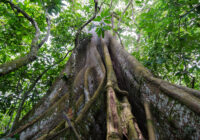The news is that according to space agency data, the rate of deforestation in the Brazilian Amazon has slowed sharply, falling nearly 50% in 2023 compared to the previous year, is certainly encouraging — yet this is hardly the time to rest on laurels. The steep drop for 2023 is less encouraging when one considers that 2022 saw near-record deforestation. Research published by the World Resources Institute (WRI) revealed that over 4 million hectares of tropical rainforest were lost in 2022 — an area the size of Switzerland.
Deforestation in the Amazon alone accounts for nearly half of global losses. My country, Brazil, is by far the biggest culprit, responsible for 1.4 million of the roughly 2 million hectares razed in the Amazon in 2022– the most significant amount since 2004, which saw the highest rate of deforestation on record. Meanwhile, a recent study has found that in the Amazon and other vital ecosystems, biodiversity and regular rain cycles face an unexpectedly imminent tipping point, with Professor Simon Willock warning that “we could realistically be the last generation to see the Amazon.”
These ecosystems have impacts far beyond their immediate environment. Since they sequester atmospheric carbon dioxide as they grow, these ecosystems are vital for combating climate change.
Reversing this alarming trajectory will require rapid, widespread implementation of conservation-based projects, striking the right balance between socioeconomic benefit and ecological protection that other models cannot provide.
Learning from the failures of the past
A combination of factors has resulted in the acceleration of the Amazon’s destruction. As Rhett Butler, CEO of environmental media NGO Mongabay, has summarized, the traditional preservation approach of “closing off forests as untouchable parks and reserves has neither improved the quality of living nor economic opportunities for rural poor nor deterred forest clearing by illegal loggers and developers,” as evidenced by the continuing destruction of the rainforest.
Conversely, the rainforest conservation model recognizes that the Amazon’s survival depends on local people, entities and governments viewing the forest as a vital, long-term source of socio-economic development. Reconciling environmental and socioeconomic imperatives, conservation allows for limited and responsible logging and other sustainable forestry activity. This, therefore, gives life to the forest that preservation stifles by creating opportunities for underdeveloped communities while providing a buffer against the pressures fuelling runaway deforestation.
The recent collaborative study conducted by WRI Brasil and a range of Brazilian research institutions charts a path forward with its New Economy for the Brazilian Amazon (NEA) concept. This breakthrough research shows that fighting rampant deforestation does not have to sacrifice local populations’ economic prospects. In fact, its findings indicate the opposite.
By 2050, the study projects that the NEA will generate over 310,000 new jobs in the Brazilian Amazon region, contribute $8.2 billion to the national GDP, restore 24 million hectares of forest – nearly the size of Italy – and cut the rainforest’s carbon emissions by 94% due to the massive reduction of CO2 emitted by deforestation.
Conservation in practice
To seize these opportunities, conservation projects will need to be delivered urgently and on a large scale. In this regard, ATA is working together with Brazilian sustainable forest management company BR ARBO Gestão Florestal and European entrepreneur Gaetano Buglisi to develop an ambitious conservation program. It is called Mejuruá, a flagship project that offers a viable and replicable blueprint to protect the ‘lung of the planet’.
The Mejuruá Project aims to conserve over 900,000 hectares of Amazonian rainforest, bringing sustainable development to the region while maintaining the health of the forest and its natural wealth. Mejuruá incorporates a sustainable forest management project, non-wood forest production in well-structured value chains, social initiatives to provide essential services – including education, health and utilities – to local communities and engage them in the process. The organization also runs a carbon credit scheme that offers a viable funding source for these undertakings.
With sustainable forest management limited, rotational logging provides job and training opportunities for local residents while allowing time for timber stocks to replenish. Furthermore, the presence of forestry workers provides a first line of defense against illegal activity. This ground surveillance is complemented by satellite imagery to identify illegal logging and agriculture across the area.
The World Bank has recently noted that “rural poverty can be reduced by unlocking the value of the forest.” Conservation projects capitalize on this potential by implementing necessary training, education, health and resource infrastructure for local communities to fully benefit from sustainable forestry. Extraction and distribution of non-timber commodities including nuts, seeds and fruit, which can generate substantial long-term income for locals, beyond cattle farming according to Mongabay.
Public backing and scaling-up needed
If the destruction of the Amazon continues it will lead to great problems for local livelihoods and well-being as well as to the increase of greenhouse gases in the Earth’s atmosphere. Encouragingly, local communities and NGOs in the state of Amazonas, as well as local, state and federal government officials in Brazil, are recognizing the vital socioeconomic and environmental contributions of this new conservation paradigm.
The Amazonas government is particularly interested in the holistic model offered by conservation projects due to their scalability in the region’s most deprived and ecologically vulnerable areas. The Lula government rightly views this innovative approach as a way to deliver on development and sustainability commitments previously seen as contradictory.
This public backing will be critical for the rapid deployment of conservation initiatives across the rainforest. Moving forward, developing a symbiosis between socioeconomic and environmental well-being will be our only hope for combating increasing threats and saving the Amazon for future generations.
The views expressed in this article are the author’s own and do not necessarily reflect Fair Observer’s editorial policy.
Support Fair Observer
We rely on your support for our independence, diversity and quality.
For more than 10 years, Fair Observer has been free, fair and independent. No billionaire owns us, no advertisers control us. We are a reader-supported nonprofit. Unlike many other publications, we keep our content free for readers regardless of where they live or whether they can afford to pay. We have no paywalls and no ads.
In the post-truth era of fake news, echo chambers and filter bubbles, we publish a plurality of perspectives from around the world. Anyone can publish with us, but everyone goes through a rigorous editorial process. So, you get fact-checked, well-reasoned content instead of noise.
We publish 2,500+ voices from 90+ countries. We also conduct education and training programs
on subjects ranging from digital media and journalism to writing and critical thinking. This
doesn’t come cheap. Servers, editors, trainers and web developers cost
money.
Please consider supporting us on a regular basis as a recurring donor or a
sustaining member.
Will you support FO’s journalism?
We rely on your support for our independence, diversity and quality.










Comment